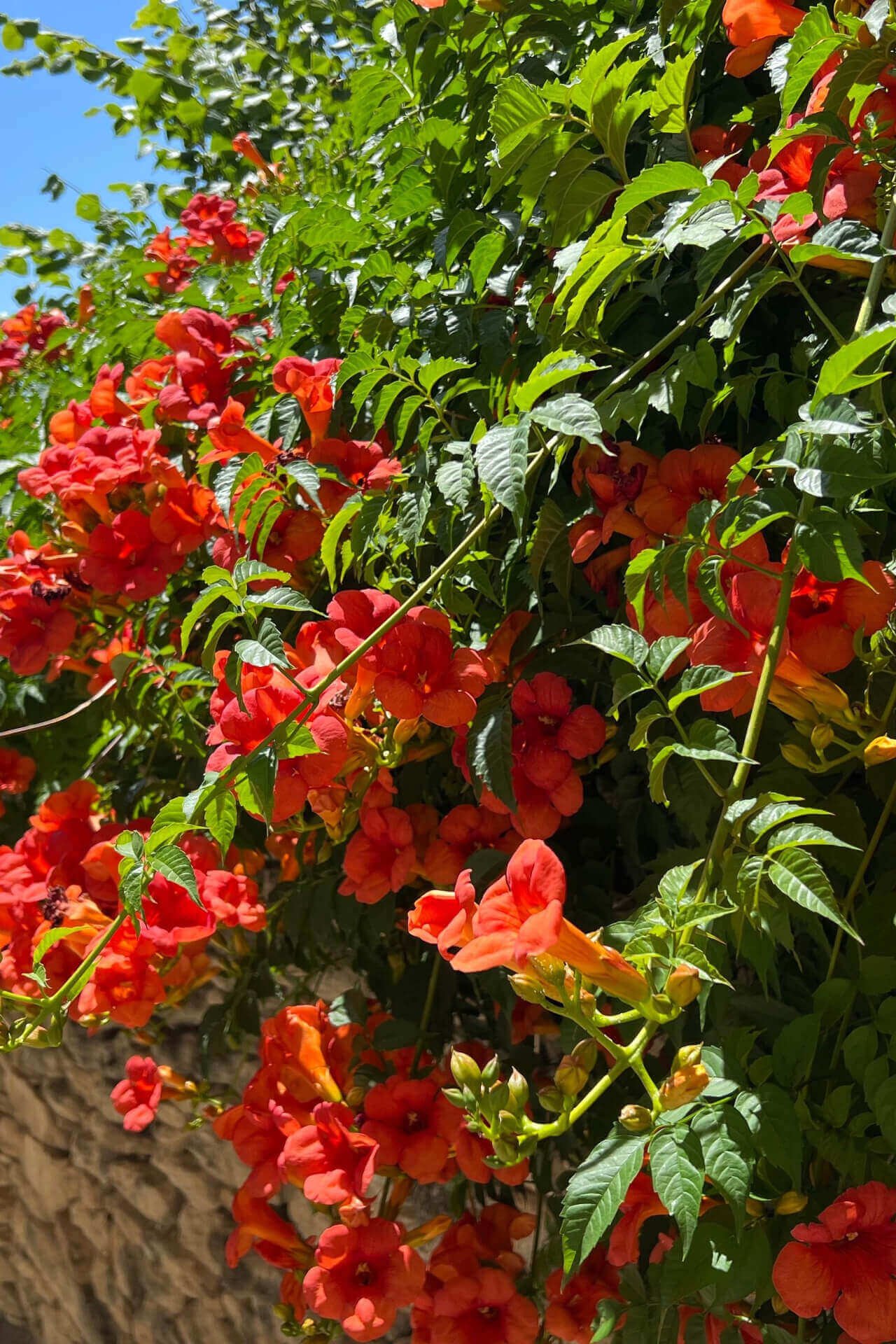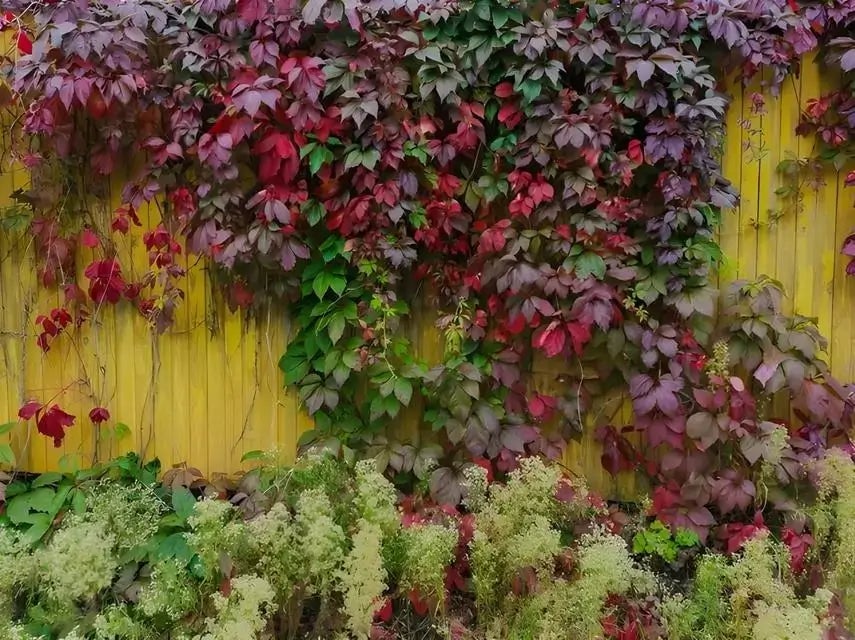Training a vine to cover an arbor or pergola can provide shade, add interest to the structure, and provide a beautiful entrance to a garden. The wrong vine, however, can destroy your arbor or pergola. Here are some tips on finding the right vine for your structure.
Ways Vines Climb
Vines are divided into four groups based on how they climb. Some vines use a combination of ways to climb, but these classifications are useful to understand.
Clinging
Clinging vines have specialized structures called adventitious roots. These roots grow from the stem and act like suction cups. They attach to anything they touch. Clinging vines can damage structures when the roots work their way into cracks and widen them. Stucco is especially vulnerable. Wood fences are also at risk because the vine keeps moisture locked against the wood and causes rot in the wood.
Sprawling
Sprawling vines depend on a tree or structure for support. A climbing rose is a sprawling vine. You will have to tie the vine to the arbor or pergola to help it climb up and over them.
Tendrils
Tendrils are small diameter stems that twist around anything they touch to hold the vine up. Once the tendrils are around something, they tighten up to pull the vine closer to the structure. Tendrils are not as destructive to buildings as clinging vines are.
Twining
Twining vines wrap the whole stem around a structure to climb it. They grow best around arbors, trellises, and poles.
Choosing the Vine
Before choosing a vine, you need to know how much sun your arbor or pergola gets. Most flowering vines need full sun to bloom the best. Some tolerate partial shade, but will not flower as much as they do in the sun. Here are some suggestions for good vines to cover an arbor or pergola.
Trumpet Vine
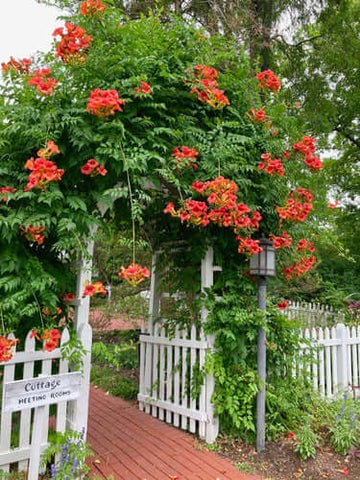
The vigorous growth of clinging vines like trumpet vine is an advantage when picking a vine to cover an arbor or pergola. Trumpet vines grow to be 30-40 feet long. The orange flowers attract hummingbirds to your garden. Deer and rabbits will eat the foliage and flowers. Trumpet vine is native to the central and eastern United States. These vines do self-seed and also spread by rhizomes, so you will have to mow or cut down volunteer vines. Don’t worry about caterpillars on your trumpet vine. They belong to the plebeian sphinx moth. Once established, trumpet vines are moderately resistant to deer, heat, and drought.
Virginia Creeper
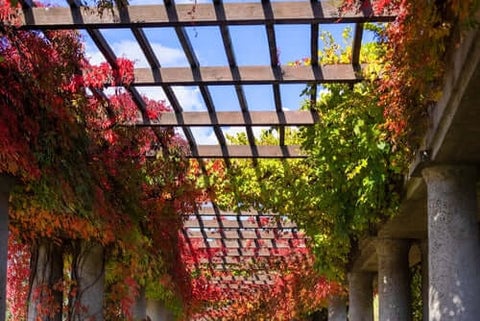
Virginia creeper is native to eastern North America, including Mexico. A vigorous plant, Virginia creeper will grow to 30-50 feet. It is deciduous and the leaves turn flame red in the fall. The flowers are small and inconspicuous but attract bees to the vine. The blue fleshy fruits are eaten by birds and small mammals. The fruit is very poisonous to humans, so don’t use this plant if you have small children. After it is established, Virginia creeper is resistant to deer, drought, and heat. It grows in a wide variety of soils.
Wisteria
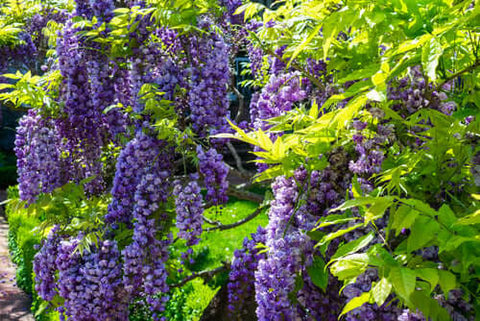
American wisteria, the kind we carry, is less aggressive than varieties from China and Japan. It is native to central and eastern North America from Virginia and Illinois south to Florida and Texas. The lavender blooms attract butterflies and bees. Wisteria is a host plant for the caterpillars of the Zarucco Duskywing and Long-Tailed Skipper butterflies. It grows 15-40 feet tall. American wisteria is deciduous, and the leaves turn gold and red in the fall. The seed pods are poisonous to horses, cats, dogs, and people. Wisteria is heat, drought, and deer resistant once established.
Don’t Use Invasive Vines
Invasive vines are those that will grow in an area and take over other plants. Make sure you use vines native to the area you live in, so you do not plant something that causes environmental problems. Remember kudzu, brought over for use in erosion control, has taken over in areas of Florida and Georgia. They have to spend millions of dollars to control it.
Training the Vine
Many vines have to be trained to grow on an arbor or pergola. Use stretchy floral tape to tie the stem of the vine to the arbor. Do not use wire or string. These will eventually strangle the vine and kill it. You can wind the stem around the arbor or tie it to the top surface, depending on how you want it to grow.
Pruning Vines
Vines tend to be vigorous growers, so need pruning to keep them from taking over your garden. Mowing or cutting suckers and volunteer vines will prevent them from forming a dense thicket. In general, prune vines in early spring before growth begins. However, if the vine is spring flowering, prune after the blooms are done. Remove dead branches and broken or diseased areas. Branches that rub or interfere with another branch should be cut back below the point of interference. Prune the top third of overgrown vines. If you have a vine that is in decline, prune the top third of it to stimulate growth.
Growing Tips
Here are some tips for growing strong vines that keep your arbor or pergola covered and shady.
- Water the vine the first year after it is transplanted. After that, gradually reduce the frequency of watering to once a week. If the vine is native to your area, it probably only needs watering during droughts once it is established.
- Some vines take two or three years to start blooming, so be patient. Concentrate on growing healthy foliage and stems during this time.
- Vines can be fertilized in early spring when they begin new growth with a cup of 5-10-5 worked into the soil around the vine. If your soil test shows a high phosphorus content, use only nitrogen to fertilize the vine.
- Remember that mature vines are heavy. Make sure any structure you train your vines to cover can support the weight of the mature vine.
Maximizing the Beauty and Impact of Flowering Vines
Flowering vines give gardeners an adaptable solution to beautify both expansive and compact outdoor areas. The way flowering vines climb and drape elegantly across structures creates unique design possibilities to turn a simple space into an enchanting focal point. You can maximize flowering vines' performance and placement effectiveness by evaluating multiple essential aspects, including support structures, sunlight exposure, soil quality, and proper maintenance routines.
The initial step should be to select a fitting support system. Climbing vines display preferences for surfaces corresponding to their attachment methods because some need to wrap around small spaces or trellises. In contrast, others attach using aerial roots or tendrils to walls and fences. The visual appeal and structural strength of arbors, pergolas, lattice panels, and wire frameworks make them suitable supports for climbing plants. Select your support structure with long-term stability in mind. Flowering vines need sturdy support systems when they become heavy with maturity to ensure healthy growth without harming their environment.
Sunlight is another key factor to consider. The optimal sunlight hours at a potential planting spot must be measured since flowering vines exhibit diverse sunlight needs. Most flowering vines produce abundant blooms when they obtain plenty of direct sunlight, but certain varieties will thrive with partial shade. Ensure your supporting structures are located where lighting conditions promote rich development and abundant blooms.
Healthy vine growth depends equally on proper soil preparation. Before planting, ensure your site has adequate drainage and fertile soil with sufficient organic matter to help establish roots. Well-aerated soil with balanced moisture levels supports the growth of flowering vines. You should add compost or organic amendments to your soil if it lacks nutrients. Applying fertilizer correctly throughout the growing period helps produce strong leaves while creating stunning flower displays.
The optimal planting location for flowering vines requires visualizing how they will blend with your current landscape. Vines create upward visual interest and deliver privacy along fences, forming elegant covered walkways. You can use vines to reduce the severity of architectural lines when they cascade across walls or railings. A vine-covered arbor close to your outdoor seating area delivers shade and an enclosed atmosphere. Vertical gardening with vines enables small gardens or balconies to use space while fully maintaining an uncluttered ground area.
Flowering vines require pruning and training methods that support their natural growth tendencies. Regular pruning prevents vines from becoming invasive or unmanageable while promoting more vigorous flowering. Cut away damaged stems from the vine and train it around its support structure to direct new growth towards desired areas. Monitor vines consistently for pests and diseases and treat any problems immediately to ensure healthy plant development.
The full potential of flowering vines will be realized when you select your support system carefully, evaluate sunlight exposure, maintain proper soil conditions, and establish a maintenance schedule. When you position these climbers thoughtfully and maintain them diligently, they transform your garden, patio, or balcony into beautiful spaces.
Read more

Blanket Flower (Gaillardia) is not just a beautiful plant for the garden. Still, it has an ecological purpose in attracting species of insects and animals that aren't commonplace worldwide. It is a...
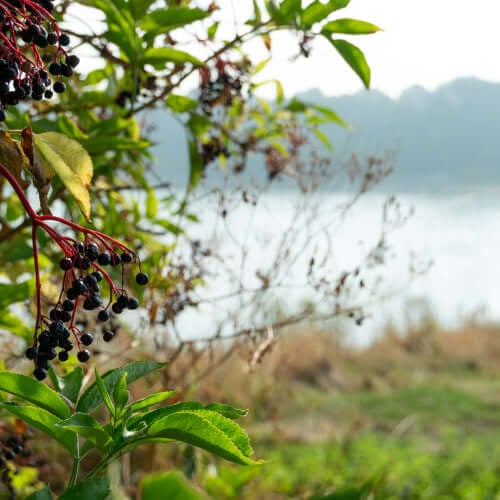
Living on the coast makes landscaping challenging. Saline soils and salt spray from the ocean make it difficult to grow much. However, there are some plants adapted to these conditions that can b...



